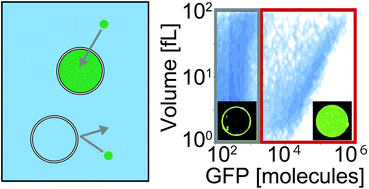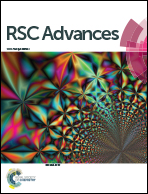Identification of giant unilamellar vesicles with permeability to small charged molecules†
Abstract
The permeability of giant unilamellar vesicle (GUV) membranes to various solutes was investigated at the single-vesicle level. Membrane permeability has primarily been studied by obtaining the average of vesicle ensembles using small or large unilamellar vesicles (SUVs and LUVs, respectively) <1 μm in diameter. The average properties observed for biological molecules or systems may not necessarily represent those of individual vesicles. In addition, although the GUV (>1 μm) is considered to be a primitive cell model, its membrane permeability has rarely been investigated. We investigated the permeation of various molecules, including amino acids and mononucleotides, through more than 20 000 GUV membranes composed of 1-palmitoyl-2-oleoyl-sn-glycero-3-phosphocholine (POPC) using flow cytometry. We observed a general trend of lower membrane permeability for polar or charged molecules than for nonpolar molecules, which is consistent with previous studies. However, we found that the lower permeation of charged molecules resulted from the presence of at least two distinct GUV populations; the larger population consisted of impermeable GUVs, and the smaller population consisted of those with a high permeability. The presence of phospholipid vesicles highly permeable to charged and small molecules (<3 nm) was found through the single vesicular measurement. The observed permeability of the GUVs may have played an essential role in the self-reproduction and evolution of primitive cells.


 Please wait while we load your content...
Please wait while we load your content...